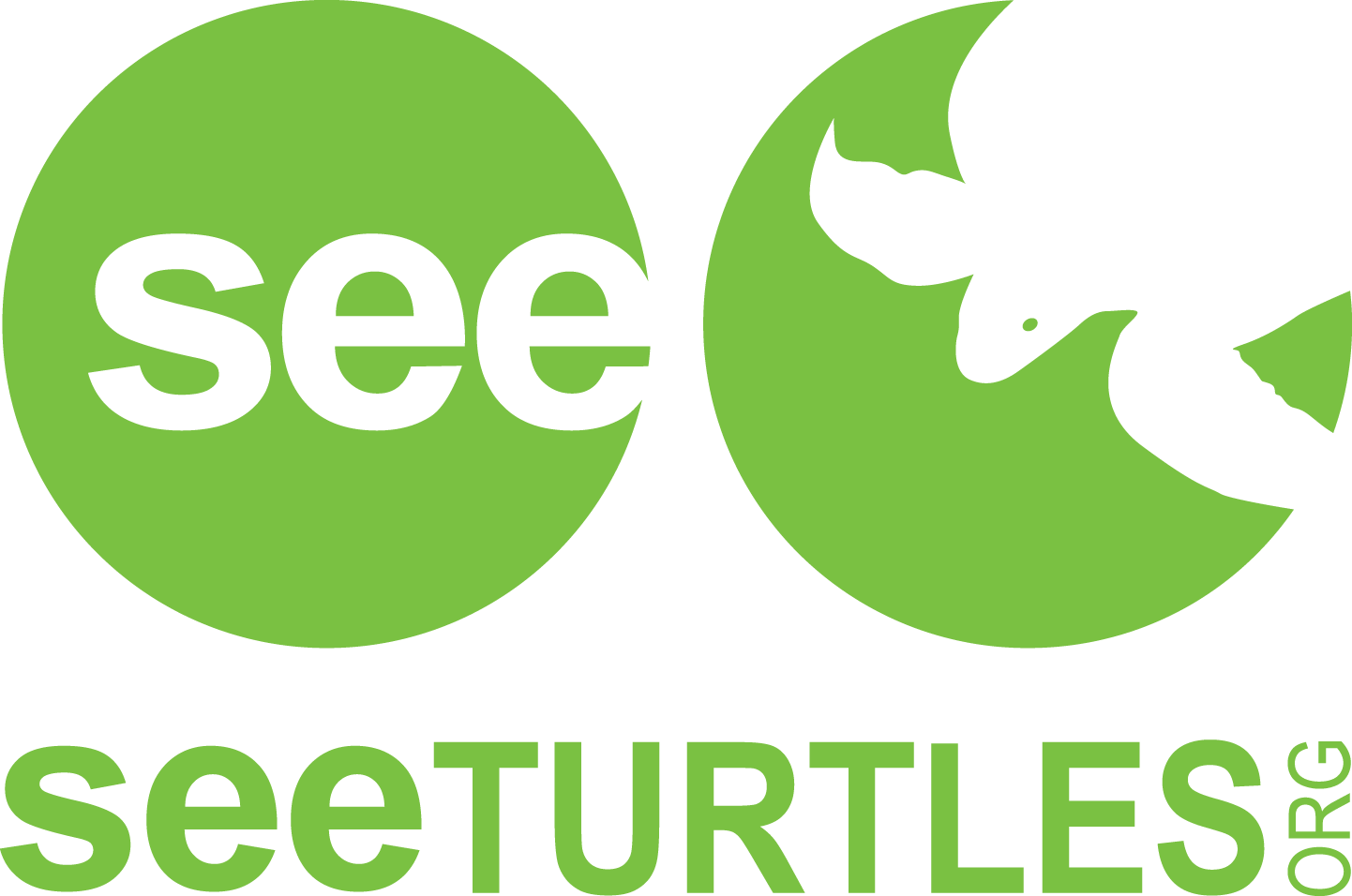By Brad Nahill, SEE Turtles Director
Our group of amateur marine biologists milled on a quiet beach on the Osa Peninsula in Costa Rica, anxious to head out into the calm Golfo Dulce (aka Sweet Gulf) to study sea turtles as part of a local research project. The calm was broken with a sudden screech from two passing scarlet macaws, their bright red color standing out against the light blue sky. The harsh call of this spectacular bird would become the soundtrack to our exploration of this peninsula, described once by National Geographic as “the most biologically intense place on earth.”
A GAGGLE OF MACAWS (PHOTO BY HAL BRINDLEY)
Heading north out into the glassy gulf, our group applied their sunscreen and readied their cameras. After a smooth 20 minute ride, the boats came to a stop and the research staff of Latin American Sea Turtles (LAST) started unraveling their nets and placing them in the water as turtles popped their heads out of the water to breathe. The nets are designed to catch sea turtles but also allow them to reach the surface and breathe. Our goal was to catch green and hawksbill sea turtles that forage in the Golfo Dulce so that we could collect data and judge their health before releasing them back to the water.
The Golfo Dulce is an extraordinary wildlife habitat. Among the ocean wildlife found here include three species of sea turtles, two species of dolphins, several species of whales, and whale sharks. The Gulf is considered one of only five tropical fjords found throughout the world and is one of the only places in the world where two different populations of humpback whales come to breed.
After the nets were set, volunteers hopped in the water to swim along the nets and unravel any sections that got entangled. We then headed to the beach to wait. As if on cue, within minutes a large male green turtle was caught and brought by the researchers to the beach. Our group scrambled to claim jobs helping with the data collection including measuring the shell, plastron (underside of the shell), tail, keeping a towel over the turtle’s head (which keeps it calm), and writing down the data onto a data sheet.
GREEN TURTLE RETURNING TO THE WATER (PHOTO: BRAD NAHILL)
After that turtle was released, our group spread out to explore the area. Some played in the water while others wandered along the coast to look for more macaws and other wildlife. Throughout the day, we caught four more turtles, all of them green turtles, and everybody in the group had opportunities to help. One of the turtles was well known to the staff, a female green turtle that migrates to the Gulf from the Galapagos each year. The sea grass beds and mangroves provide foraging habitat for the greens and hawksbills but where most of the turtles come from and go to afterwards is still a mystery.
The next day, we headed to LAST’s mangrove restoration project. Our volunteers lined up around a mud pit with nervous looks, unsure of what was to be asked of them. The coast around the Gulf is rich with mangroves but many acres have been lost over the past few decades. Mangroves are critical to the health of coastal species, providing both protection from erosion and storms and places for fish and other small animals to reproduce and grow. To our relief, our job was only to fill plastic bags with dirt and plant them with mangrove seeds. Working efficiently, our small group knocked out more than 200 bags, ready to be planted by the next group of volunteers.
MANGROVE HATCHERY (PHOTO BY HAL BRINDLEY)
After a couple of days focused on reptiles and trees, we turned our focus to marine mammals. Joining a group of researchers from the Cetacean Research Center (CEIC in Spanish), we headed out again into a different part of the Gulf to look for bottlenose and spotted dolphins. Each person was assigned a job to collect data every half hour during the day, including weather, air, and ocean temperature, and the level of waves. Our two boats spread out to cover a larger area and after about an hour we got word the other boat had found a large group of spotted dolphins.
Keeping mostly to the deep waters in the middle of the Gulf, the spotted dolphins travel in large groups for safety. Roughly 100 of the slippery cetaceans foraged, socialized, and occasionally jumped out of the water while our two boats recorded their behavior and took photos used to identify individuals by their dorsal fins. Once we had our fill with this pod, we moved to the coastal areas near river mouths where the bottlenose dolphins can usually be found. We saw two small groups of mothers and calves of this more solitary species of dolphin.
DOLPHIN WATCHING WITH CEIC (PHOTO HAL BRINDLEY)
Our tally from the Gulf was five sea turtles, dozens of scarlet macaws, and more than a hundred dolphins. We raised roughly $1,000 for sea turtle and marine mammal research and conservation in addition to our volunteer help and several thousand dollars invested into local communities.





